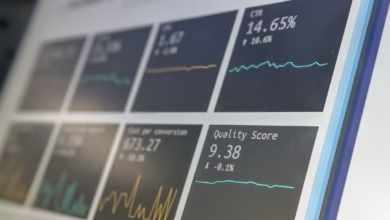Mastering Fundamental Analysis: Essential Insights for Informed Trading Across Stocks, Forex, and Crypto Markets

In the dynamic world of trading, understanding the financial health of assets is crucial for making informed decisions that can lead to successful investments. Fundamental analysis serves as the cornerstone of this evaluation, providing traders with the insights needed to navigate various markets, including stock trading, forex trading, and crypto trading. By examining core financial metrics and economic indicators, traders can gain a clearer picture of an asset’s intrinsic value, allowing them to devise effective trading strategies.
This article delves into fundamental analysis, exploring its significance in the realm of online trading platforms. We will cover essential metrics for evaluating asset health across different trading types—whether you are engaging in day trading, swing trading, or derivatives trading. Furthermore, we will discuss how to integrate fundamental analysis with technical strategies to enhance your trading psychology and risk management practices. Whether you are a novice looking to understand the basics or an experienced trader seeking to refine your approach, this comprehensive guide will equip you with the knowledge necessary to make sound trading decisions and navigate the complexities of the market.
- 1. Understanding Fundamental Analysis: The Cornerstone of Informed Trading Decisions
- 2. Key Metrics for Evaluating Asset Health: A Guide for Stock, Forex, and Crypto Trading
- 3. Integrating Fundamental Analysis with Technical Strategies: Enhancing Your Trading Psychology and Risk Management
1. Understanding Fundamental Analysis: The Cornerstone of Informed Trading Decisions
Fundamental analysis serves as the cornerstone of informed trading decisions across various financial markets, including stock trading, forex trading, and crypto trading. By evaluating the intrinsic value of an asset, traders can make educated choices that align with their trading strategies, whether they engage in day trading, swing trading, or long-term investments.
At its core, fundamental analysis involves examining economic indicators, company financial statements, and market conditions to gauge an asset's potential for growth or decline. This method contrasts with technical analysis, which focuses on price movements and historical data. While technical analysis can provide insights into short-term trading patterns, fundamental analysis is essential for understanding the underlying factors that drive asset prices.
For instance, in stock trading, key metrics such as earnings per share (EPS), price-to-earnings (P/E) ratios, and dividend yields play a crucial role in evaluating a company's financial health. In forex trading, macroeconomic factors, including interest rates and inflation, heavily influence currency valuations. Similarly, in commodities trading, supply and demand dynamics, geopolitical events, and seasonal trends can significantly impact market prices.
Furthermore, traders can apply fundamental analysis to derivatives trading, including options trading and futures trading, by assessing the underlying assets' value. By understanding the economic landscape, traders can better manage risk, leveraging their strategies in margin trading or utilizing high-frequency trading algorithms to capitalize on market inefficiencies.
In today's digital age, online trading platforms offer tools for both fundamental and technical analysis, enabling traders to develop comprehensive market analysis. This integration of data allows for sophisticated trading strategies, including arbitrage trading and energy trading, which can enhance profitability.
Ultimately, mastering fundamental analysis equips traders with the knowledge needed to navigate the complexities of the financial markets responsibly. By combining this approach with insights into trading psychology and risk management, traders can make informed decisions that are crucial for success in the dynamic world of trading.
2. Key Metrics for Evaluating Asset Health: A Guide for Stock, Forex, and Crypto Trading
When evaluating the financial health of assets for informed trading decisions, understanding key metrics is essential across various trading domains, including stock trading, forex trading, and crypto trading. These metrics provide insights into the value and performance of assets, helping traders make informed choices. Here are some fundamental metrics to consider:
– **Earnings Per Share (EPS):** EPS indicates a company's profitability and is calculated by dividing net income by the number of outstanding shares. A higher EPS suggests better financial health, making it a crucial metric for stock trading.
– **Price-to-Earnings Ratio (P/E Ratio):** This ratio compares a company's current share price to its earnings per share. A low P/E ratio may indicate that a stock is undervalued, while a high P/E ratio could suggest overvaluation. This metric is vital for assessing stocks in swing trading and long-term investments.
– **Return on Equity (ROE):** ROE measures a company's ability to generate profit from its shareholders' equity. A high ROE indicates efficient management and strong financial health, which can be particularly important in commodities trading and derivatives trading.
– **Debt-to-Equity Ratio:** This ratio assesses a company's financial leverage by comparing its total liabilities to shareholders' equity. A lower debt-to-equity ratio suggests less risk, making it a relevant consideration for risk management in options trading and margin trading.
– **Market Capitalization:** The total market value of a company's outstanding shares, market capitalization helps traders understand a company’s size and stability. This metric is crucial for index trading and ETF trading, where diversification is key.
– **Volume and Volatility:** In forex trading, volume indicates the number of assets traded within a specific period, while volatility measures price fluctuations. High trading volume can signify strong interest in an asset, whereas volatility can present opportunities for day trading and scalping strategies.
– **Liquidity Ratios:** These ratios measure a company's ability to cover its short-term obligations. Common liquidity ratios include the current ratio and quick ratio, which are vital for assessing the financial health of assets in high-frequency trading and algorithmic trading strategies.
By analyzing these key metrics, traders can gain a comprehensive understanding of an asset's financial health. This evaluation aids in making informed decisions across various trading strategies, from binary options to arbitrage trading, ultimately enhancing trading psychology and performance.
Remember, while fundamental analysis provides valuable insights, it should be complemented with technical analysis to create a well-rounded trading strategy. By leveraging both approaches, traders can better navigate the complexities of the market and improve their chances of success in the dynamic world of online trading platforms.
3. Integrating Fundamental Analysis with Technical Strategies: Enhancing Your Trading Psychology and Risk Management
Integrating fundamental analysis with technical strategies is essential for enhancing both trading psychology and risk management across various trading domains, including stock trading, forex trading, and options trading. By combining these two analytical approaches, traders can develop a more comprehensive understanding of market conditions and improve their decision-making processes.
Fundamental analysis focuses on evaluating the financial health of assets by examining economic indicators, company performance, and market trends. This analysis provides a solid foundation for understanding the intrinsic value of an asset, which is crucial for making informed trading decisions in markets like commodities trading and crypto trading. For instance, knowing the underlying factors that drive prices can help traders anticipate market movements and adjust their strategies accordingly.
On the other hand, technical analysis employs historical price data and chart patterns to forecast future price movements. This method is particularly useful in day trading, swing trading, and high-frequency trading, where timing plays a critical role. By integrating technical analysis with fundamental insights, traders can enhance their trading strategies, allowing them to identify optimal entry and exit points for their trades.
Moreover, the combination of these analyses can significantly improve trading psychology. Understanding the fundamental factors influencing an asset can help traders maintain a long-term perspective, reducing the emotional impact of short-term market fluctuations. This approach encourages disciplined trading, which is especially important in leveraged trading and margin trading scenarios, where risk management becomes paramount.
Risk management is another critical aspect where the integration of fundamental and technical analysis proves beneficial. By utilizing both analyses, traders can create more robust trading strategies that account for potential market volatility. For example, in algorithmic trading or copy trading, incorporating fundamental indicators can lead to more informed algorithm design, enhancing overall trading performance.
In conclusion, integrating fundamental analysis with technical strategies not only strengthens risk management but also fosters a healthier trading psychology. By leveraging the strengths of both approaches, traders can navigate the complexities of online trading platforms and refine their trading strategies for various markets, including derivatives trading, ETF trading, and binary options. This holistic approach ultimately leads to more informed and confident trading decisions, paving the way for success in the dynamic world of trading.
In conclusion, fundamental analysis serves as an essential tool for traders looking to evaluate the financial health of various assets, whether in stock trading, forex trading, or crypto trading. By understanding the core principles of fundamental analysis, traders can make informed decisions that enhance their overall trading strategies. The key metrics discussed provide a comprehensive framework for assessing asset viability, allowing for better risk management and more effective trading psychology.
Integrating fundamental analysis with technical strategies can further refine your approach, whether you're engaging in day trading, swing trading, or even more complex methods like algorithmic trading and high-frequency trading. As you develop your trading skills, remember to keep a balanced view of both fundamental and technical analysis to navigate the complexities of the market effectively.
Ultimately, the combination of robust market analysis and a solid understanding of trading fundamentals empowers traders to make educated choices, whether they are involved in options trading, futures trading, or commodities trading. As you continue to explore different trading platforms and strategies, always prioritize informed decision-making to enhance your trading experience and potential profitability. Embrace the power of fundamental analysis in your trading journey, and watch as it elevates your trading performance across various asset classes.





